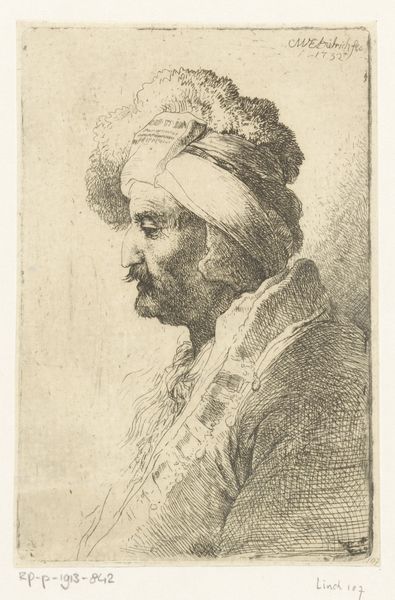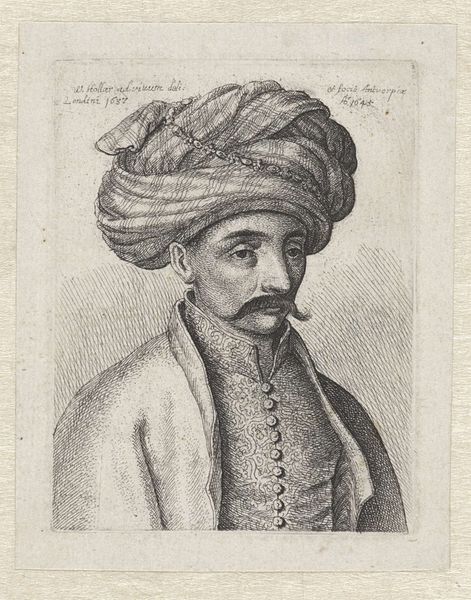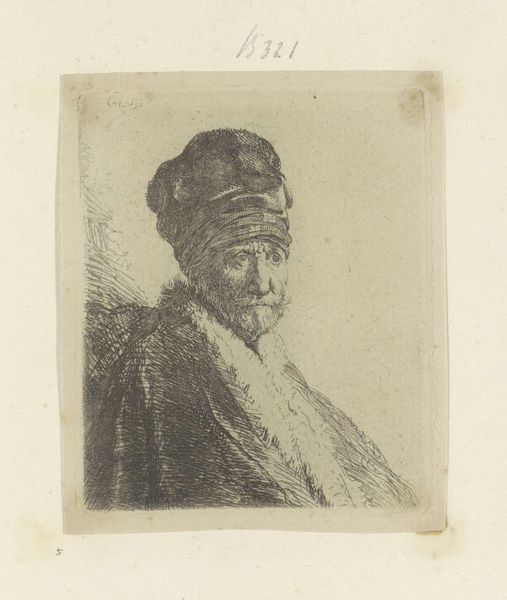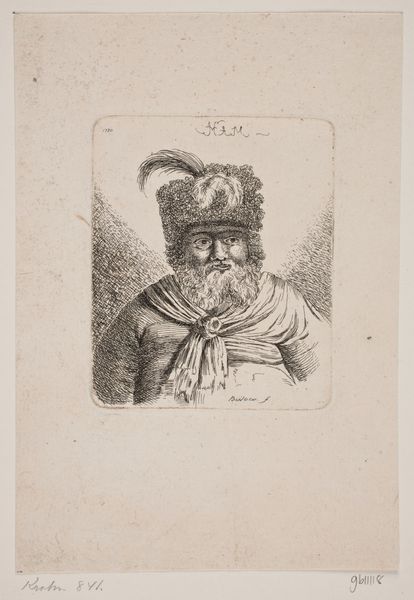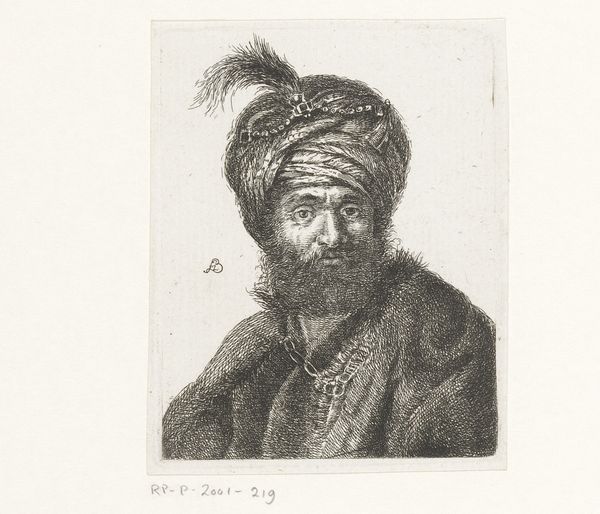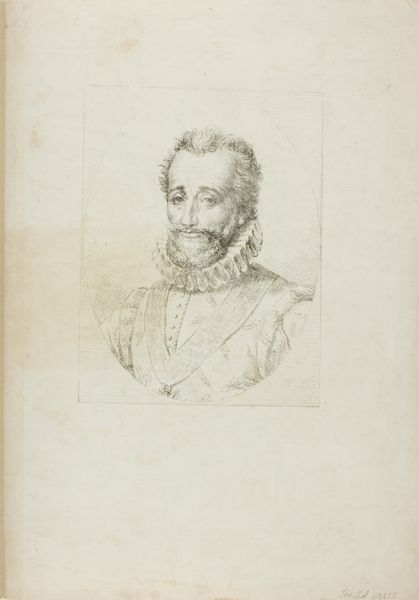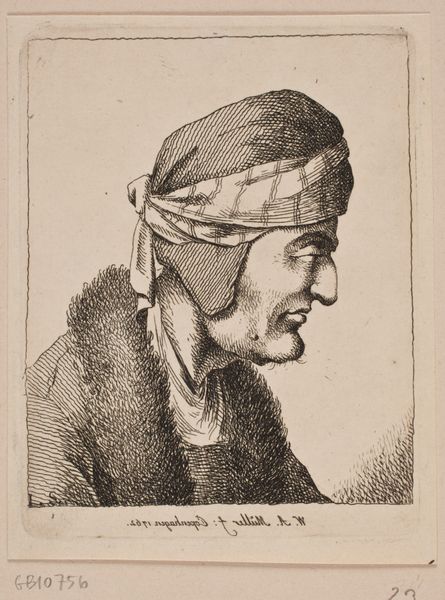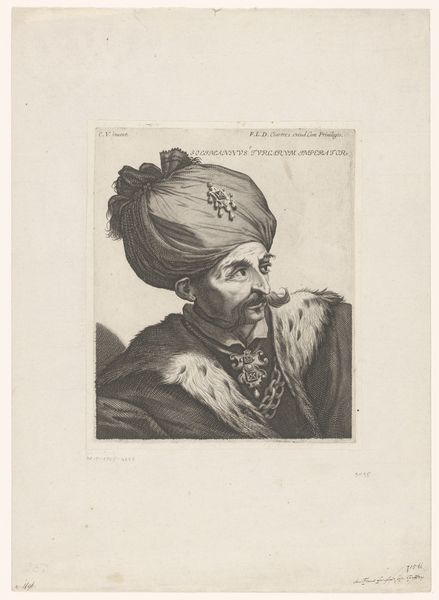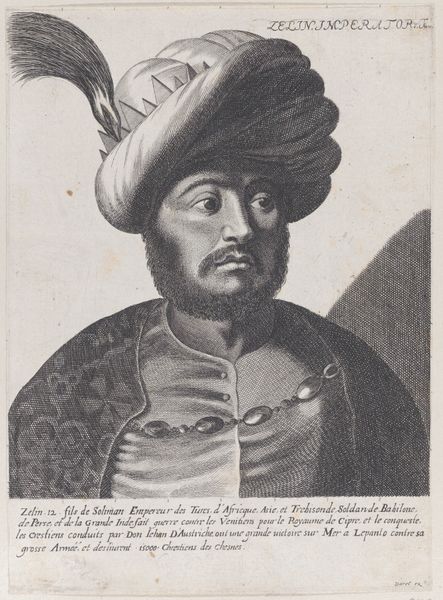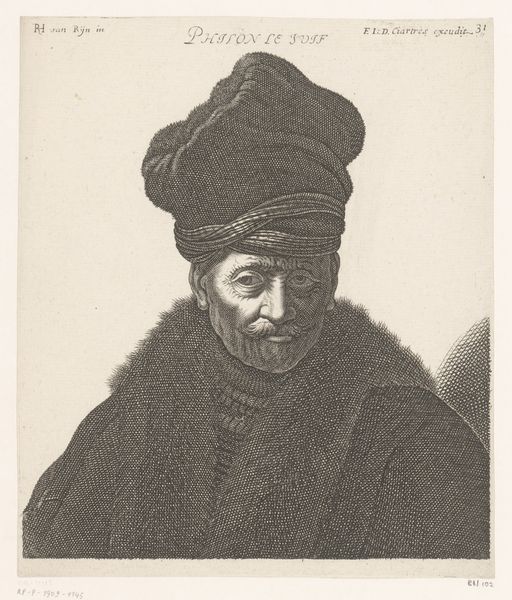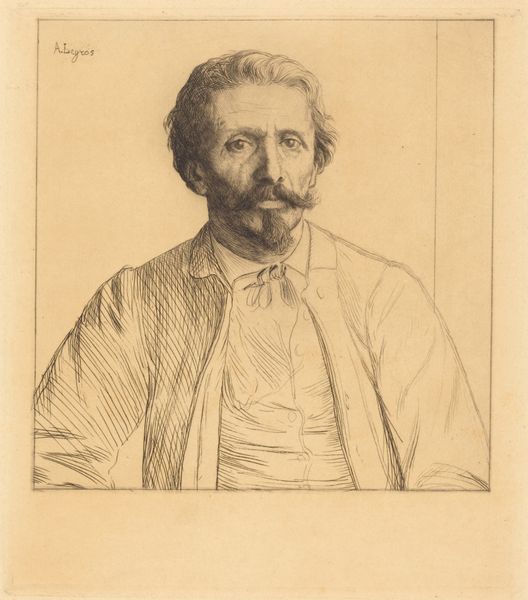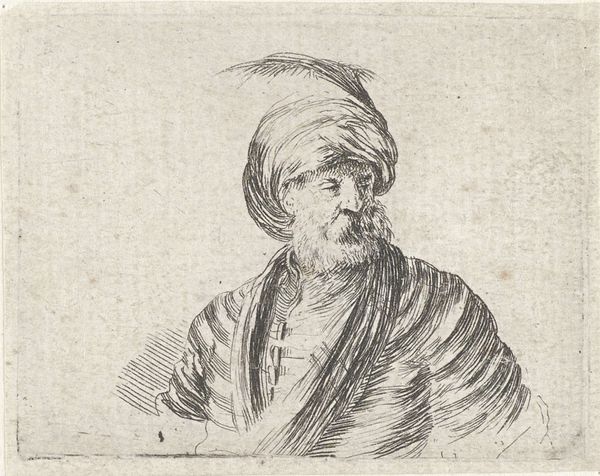
Bust of a Pole, from "Drawing Basics" (I principii del disegno) 1641 - 1700
0:00
0:00
drawing, print, engraving
#
portrait
#
drawing
#
baroque
# print
#
men
#
engraving
Dimensions: Sheet: 4 1/16 × 3 11/16 in. (10.3 × 9.4 cm)
Copyright: Public Domain
Curator: Here we have Stefano della Bella’s “Bust of a Pole, from 'Drawing Basics'”, an engraving dating sometime between 1641 and 1700. Look closely, and you’ll see the incredible detail achieved through the printmaking process. Editor: My first impression is one of somber dignity. The man's gaze is direct, almost challenging, despite the softness of the line work. Curator: Indeed. Consider that the very act of depicting a "Pole" during this period carries significant weight. It reflects the complex relationship between Italy and Poland, marked by political alliances, religious affiliations, and cultural exchange, and let's not forget warfare. Editor: The hat immediately draws my eye. The fur, the ornamentation – they speak volumes about status and perhaps even the economic underpinnings of his identity. The tools to create this engraving also required knowledge and access to materials. It isn’t just representation but a product of labor. Curator: Absolutely. His attire isn't merely decorative, it's a symbol of his cultural background and social standing within the intricate web of 17th-century European politics. Della Bella is embedding this man within a very specific socio-political context. Editor: And the way Della Bella renders texture is remarkable. Look at the subtle differences between the fur hat and the fabric of his cloak. You can almost feel the weight and warmth of the materials, each demanding different tools and techniques to be successfully engraved. Curator: Exactly! Think of the Baroque era's fascination with capturing likeness and the burgeoning concept of national identity. By titling it, 'Bust of a Pole', it brings forth a specific political agenda that aims to both categorize and potentially exoticize. Editor: I'm struck by the absence of color. It forces us to focus on the form and the texture – to really see how the materials were handled. It’s a powerful statement about the capabilities of printmaking itself as a medium. Curator: Considering its inclusion in a series on "Drawing Basics," the engraving takes on new meaning. Is della Bella suggesting that even national identity and power dynamics are just fundamental elements to be mastered? Editor: Examining the print through this lens, one has to acknowledge the labor that has brought all of these concepts, identity, political power and artistic technique, into being for our consideration. It makes the artwork even richer for contemporary dialogues around identity and historical materialism.
Comments
No comments
Be the first to comment and join the conversation on the ultimate creative platform.
